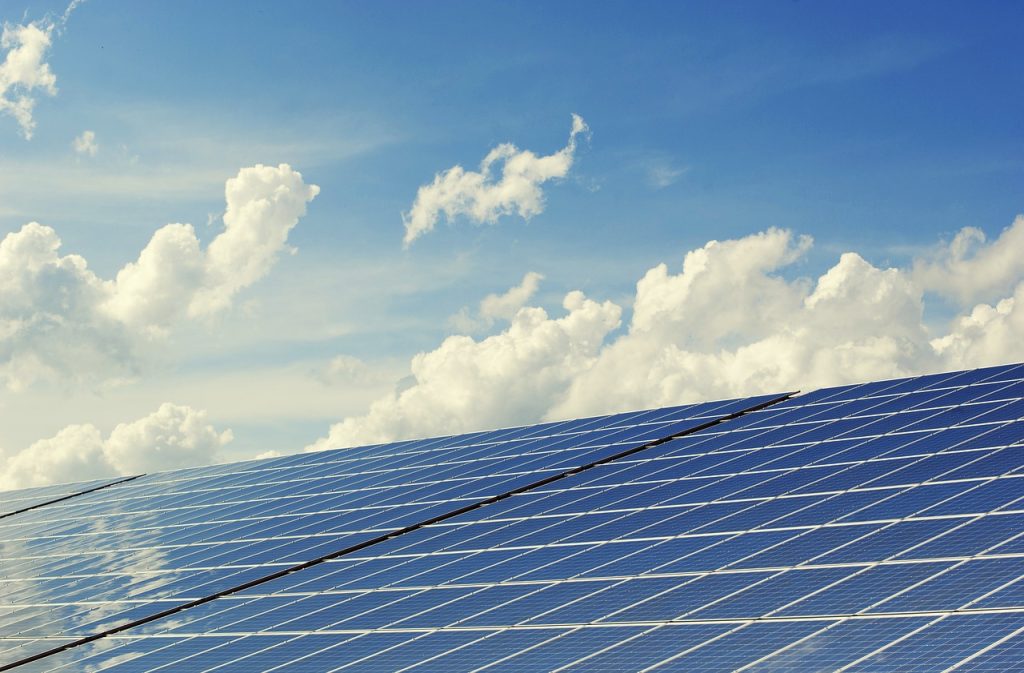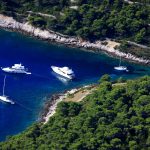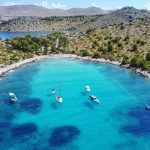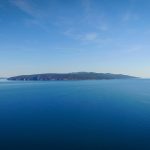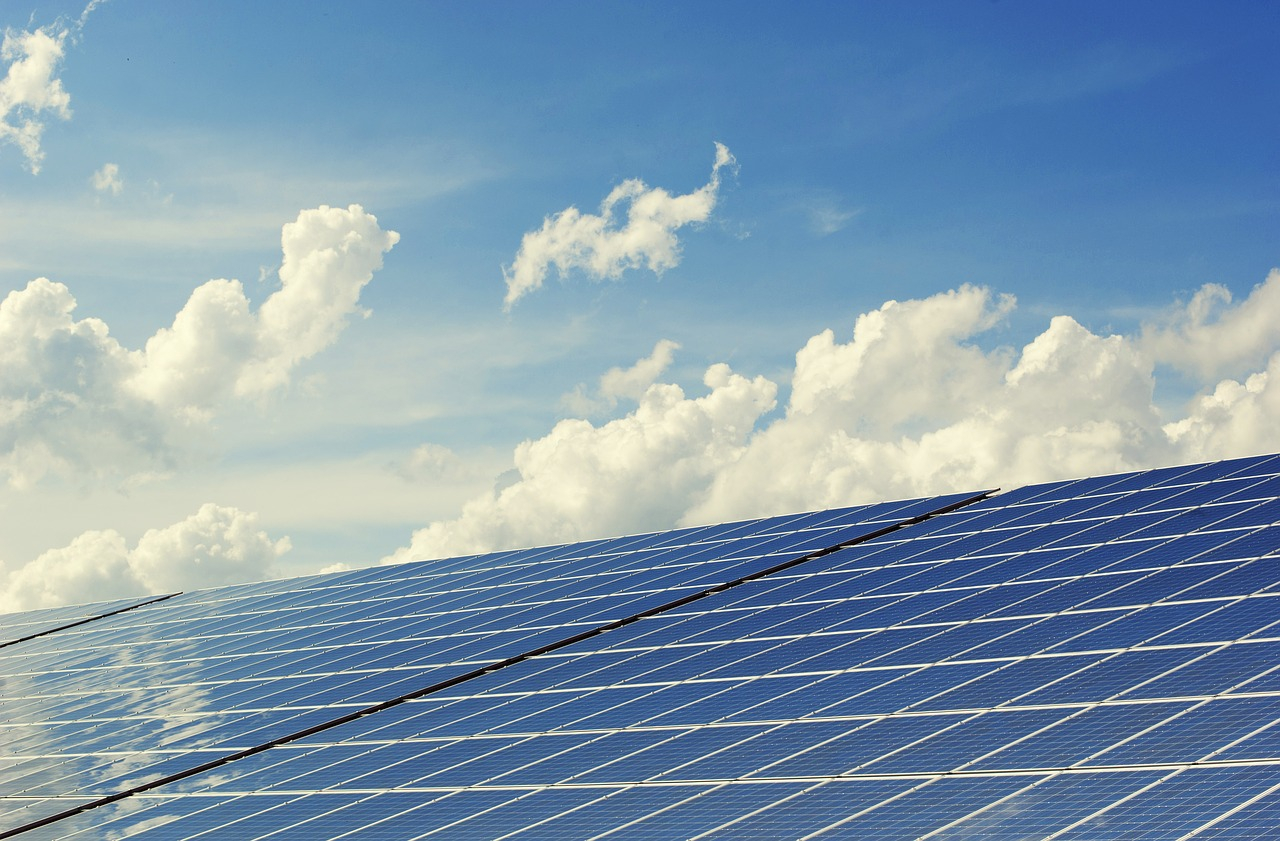
September 20, 2020 – The Vis Solar Power Plant is not only the first on a Croatian island, but it is currently the largest solar power plant in Croatia.
Slobodna Dalmacija reports that back in 2010, the idea of building a solar power plant on the southern hills of Vis seemed like an impossible mission. Ten years later, it has become a reality that has brought sustainable energy to Vis, the most remote central Dalmatian island.
The new surplus power plant of 3.5 MW, with an annual planned production of about five million kWh of electricity, is the largest solar power plant in Croatia – and it is first on a Croatian island. For every inhabitant of the island, especially those tied to the mainland for services, this investment is more than a relief.
Apart from Vis, the inhabitants of Hvar, but also Zagora, from the peripheral ring of the three ‘V’s’ of Split-Dalmatia County, will also be as lucky. This group also includes Vrlika and the Vrgorac area, which led the announced energy investments with specific energy plans. With them are the planned projects in Sestanovac, Lecevica, and those from the area of Zadvarje, Kastela, Imotski, and in the future, other central Dalmatian islands, too.
As a reminder, since the end of last week, Vis has been receiving electricity for 1,600 households from a modern power plant, which will show its importance, especially during periods of the tourist season, when there are standard periods of higher consumption. With its electricity and drinking water sources, this island becomes energetically self-sustainable. Paraphrased, it is a small step for humanity, but extremely big for both the people of Vis and Croatia.
“The solar power plant on Vis, an investment worth one million kuna, built on a land area of 5.5 hectares, is the first of seven HEP solar power plants put into operation in the planned period from 2019 to 2023. This is a cycle worth 750 million kuna. With this power plant, Vis has gained greater security of electricity supply,” stated Frane Barbaric, President of the Management Board of Hrvatska elektroprivreda.
Vis experienced a historic moment with the investment in Krizeva glavica, not far from the settlement Zena Glava. He laid the concrete foundations of what will happen in Croatia in the next 10 years. Namely, in 2017, the Government of the Republic of Croatia strongly embarked on the implementation of the new energy policy of Croatia and the European Union, focused on green energy investments.
But the basic question is, why Vis?
According to one of the projections made and presented by the Hrvoje Pozar Energy Institute less than four years ago, Dalmatia, the coast, and the islands have the greatest solar potential. Among them, the Southern Dalmatian islands stand out. Nevertheless, statistics show that compared to other EU countries, Croatia still does not make sufficient use of this natural potential. But it is encouraging that the EU solar market has grown by 36 percent over the past year. The projections made by the United Nations Development Program show a plan to increase the use of solar energy in Croatia until 2030, said Dr. Luksa Lulic, member of the Supervisory Board of HEP.
Announcements about the planned construction of new solar and wind power plants are quite optimistic, and it is interesting that Split-Dalmatia County will play an extremely important role in this direction. Moreover, precisely because of the abundance of sunshine and beautiful locations, this county is a natural Croatian reservoir for the construction of new renewable energy sources. This is confirmed by the prefect of Split-Dalmatia, Blazenko Boban, who stated that this area will become the flagship of what the EU expects from us.
“Solar power plants are extremely desirable in our area because in the frequent consumption of electricity, so when it is necessary to import energy, we have our own potential. This is especially pronounced at a time of higher influx of tourists in the season, which gives us self-sustainability. Thanks to the Sun Power Plant on Vis and other solar power plant projects under construction, such as SE Vrlika and projects in development such as the Bogomolje power plant on Hvar and others, Split-Dalmatia County will remain a leader in renewable sources in the country. Vis is the leader of this process, it is this most remote island of our county that now has energy self-sufficiency,” says Boban.
The projection of the energy future of Split-Dalmatia County is based on the existing spatial plan, in which we are implanting 28 wind farm fields. Nine of them have already been built. There are also 25 solar fields led by Vis. At the other end of our county, says prefect Boban, a power plant of 6.8 megawatts, worth 45 million kuna, is planned in Vrlika, and there is also the Vrgorac area as the third peak of the ‘V’ triangle.
“These three ‘V’ plants are located on the outskirts of our county, and within it, construction is still planned at several other positions. We know that it will be on the Sestanovac plateau, for which projects have not been worked out in detail yet. That is why it is still difficult to talk about strength. There is also Bogomolje on Hvar, and Lecevica is also planned. SE Vrlika is moving quickly with the realization, the project is finished, the start of construction is planned by the New Year. We will soon know all the characteristics of the plant from the planned sunny fields of Hvar and from the Vrgorac area. Among the seven planned HEP power plants from the announced five-year cycle, the Hvar SE Bogomolje also found a place. In the medium term, among our acquisitions, among the larger SEs are those from the Vrgorac plateau, Sestanovac, Lecevica, and those from the area of Zadvarje, Kastela and Imotski,” says Boban.
His words are supported by the announcements from HEP, from which the leaders openly sent an invitation for cooperation with other islands in the Dalmatian area during their stay on Vis. From the slope of the Vis hill covered with 11,200 photovoltaic modules, they invited Dalmatian leaders to a new open public call, to plan preparations and cooperation in the construction of new solar power plants.
HEP leaders set out in this direction, announcing talks with the leadership of four Hvar municipalities the day after the release of SE Vis. The power plant in Bogomolje, which is about to obtain a location permit, could be joined in the future by ‘sister’ acquisitions, for example in Jelsa, and at two other locations. Along the way, a lot more will need to be defined on this issue.
HEP’s five-year investment cycle for the construction of solar power plants, worth HRK 750 million, combines the construction of the solar power plant Marici near Zminj, Istrian Kastelir 2, and SE Cres as the largest solar power plant under construction in Croatia with 6.5 MW and an investment of HRK 41 million. There is also SE Obrovac, SE Vrlika jug, and SE Stankovci. By the end of 2020, WPP Korlat, the first wind farm in HEP’s production portfolio, will also be put into commercial operation.
As far as Vis is concerned, HEP annually invests an average of one million kuna in the improvement of the island’s electricity infrastructure. In the next three years, this amount will be almost 30 million kuna through a number of projects. Among them, laying submarine cables at Hvar-Pakleni-Vis and Vis-Bisevo stands out, as well as laying 20-kilovolt cable lines in Ravno Stupisce and Smokova. Also, work has begun on the installation of the first ELEN charging station for electric cars on the island, in the town of Vis, followed by the installation of a charging station in Komiza, said HEP, which will build a new 1500 MW of production capacity by 2030.
For the latest travel info, bookmark our main travel info article, which is updated daily.
Read the Croatian Travel Update in your language – now available in 24 languages
Join the Total Croatia Travel INFO Viber community.

